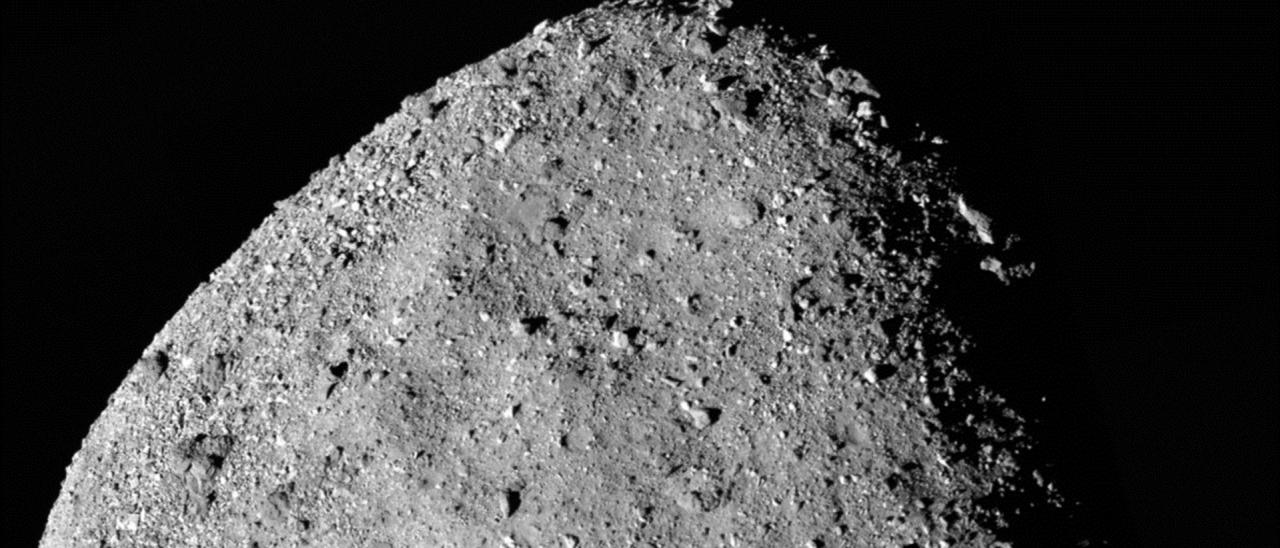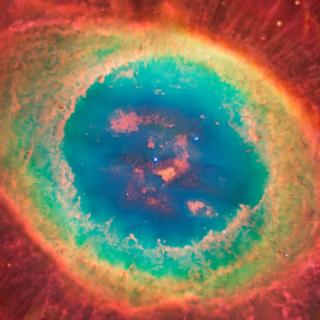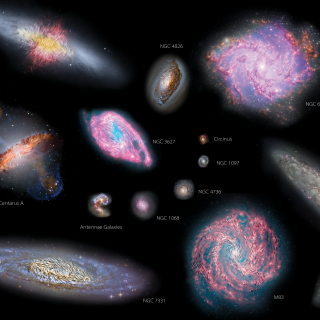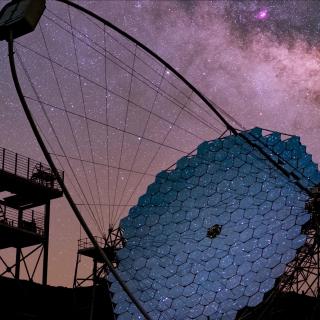Mosaic image of asteroid Bennu composed of 12 PolyCam images (one of the three cameras of OCAMS) collected on December 2, 2018 by the OSIRIS-REx spacecraft from a distance of 24 km. Credit: NASA/Goddard/University of Arizona
Advertised on
Authors
References
2019 Nature Astronomy 3 341
Between August and December 2018, during the Approach and Preliminary Survey phases of the NASA OSIRIS-REx mission, a series of images and spectra of the surface of asteroid Bennu, target of the mission, was acquired. Images acquired with MapCam, using 5 different filters provide an average albedo (fraction of the light reflected by the surface of the asteroid) of about 4.5 %, consistent with the spectral type of Bennu as determined from ground-based observations, and in agreement with the results from OSIRIS-REx disk-integrated photometry. Such a dark surface and spectral behaviour are also consistent with the reflectance values observed for CM carbonaceous chondrites, some of the most primitive meteorites. Bennu shows an extensive surficial diversity, with a large variety of particle sizes. The surface of the asteroid is covered by more than 200 boulders larger than 10 m in diameter, appearing predominantly at high latitudes. Boulders also show a wide range of morphology, sizes, and albedo, with variations in brightness from 3.3% to 15%, larger than any variation observed on other asteroids visited by spacecraft. Such differences could be due to primordial differences in the parent body that originated Bennu after a collisionally disruptive event, or due to material that has been exposed to different levels of solar wind ions or micrometeorite bombardment. Interestingly, Bennu exhibits only small areas free of boulders and with fine dust (regolith). Actually, Bennu’s global average thermal inertia (the resistance of a material to temperature changes) determined from data acquired by OVIRS and OTES, suggests a surface dominated by particles having sizes from 0.5 to 5 cm, which is not what is observed in the images. Thermal models are used to translate measurements of thermal inertia into particle sizes. It is evident from what it’s been found in Bennu that these models have to be revised. Most of these questions will be solved with observations at higher spatial and spectral resolutions during the Detailed Survey phase of the mission, planned for the spring of 2019.



